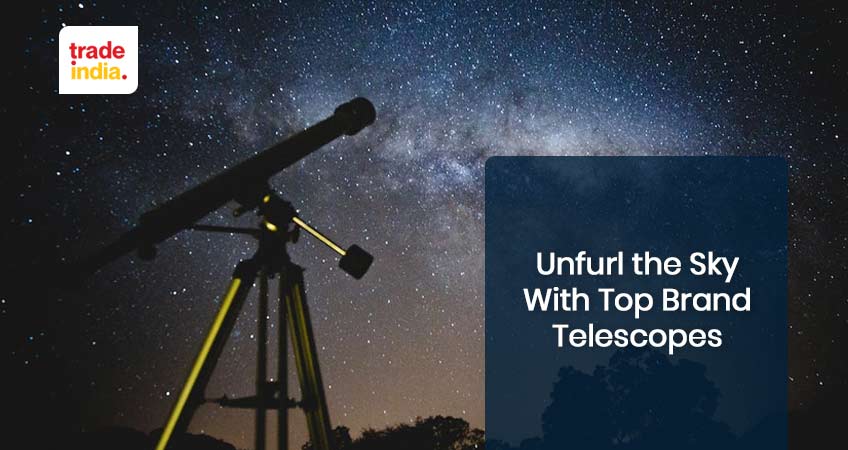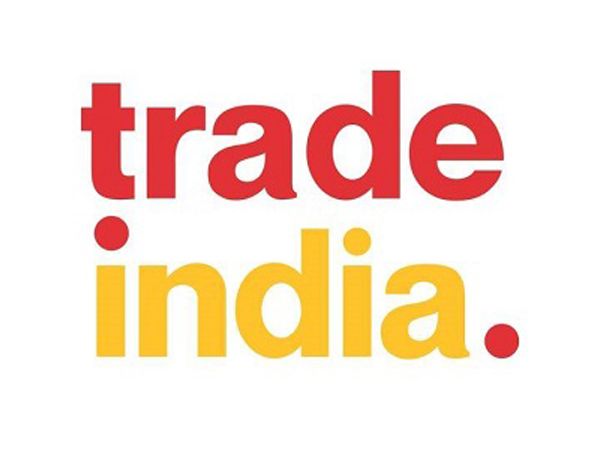Unfurl The Sky With Top Brand Telescopes

Introduction
Astronomers use telescopes to observe celestial bodies in the distance. To collect and concentrate light from the sky, curved mirrors are used in the majority of telescopes and by necessity in all large telescopes.
Primitive telescopes employed curved, transparent glass pieces called lenses to concentrate light. This begs the question, "Why do we utilize mirrors now?" Mirrors are preferable to lenses because of their lower weight and simpler fabrication. A telescope's mirrors and lenses are known as "optics." When using a large and powerful telescope, even faint objects and distant galaxies become visible. That requires massively sized mirrors or lenses.
Any telescope worth its salt will have nearly flawless optics. So, the shape of the mirrors and lenses used to focus the light must be precise. They must be free of blemishes such as stains, scratches, and the like. If they do, the picture will be distorted or fuzzy and hard to make out.
A lens-based telescope is known as a refracting telescope. Just like the lenses in your spectacles, a lens can refract or bend the light that passes through it. This improves the clarity of vision through eyewear. A telescope uses this to bring distant objects into focus.
Top 9 best telescope manufacturers and brands in 2022
Meade Instruments
Meade Instruments is often regarded as a frontrunner among telescope manufacturers due to its reputation as a pioneer in the industry. Meade, famous for its innovative telescopic designs, has offered scores of enhancements throughout the years that have simplified and enhanced the hobby of amateur astronomy.
Meade Instruments is well-known for its exceptional products thanks to the company's commitment to cutting-edge research and development and its dedication to optical precision.
The 70mm aperture of the Meade Instrument Portable Refracing Astronomy Telescope allows for high-contrast, high-resolution observations. If you've never gazed up into the heavens before, the Infinity 70 Refractor is your best bet.
Achromatic refractors are used in optical design. The slow-motion control rod's Alt-azimuth Mount makes it simple to follow the paths of moving astronomical objects. On each and every one of their wares, you'll see it. All of Meade Instruments' products are getting updated with new tech that makes them more convenient and enjoyable to use.
CSSEA
When it comes to telescopes, CSSEA is the most original and innovative manufacturer available. CSSEA's refractors are exceptionally well-made, which is surprising given the company's competitive pricing strategy but speaks to the quality of their products.
If you prefer a particular design, they have alternatives such as reflectors, altazimuth mounts, and equatorial mounts. In any event, CSSEA is the greatest brand of a telescope on the market right now because it has several excellent items accessible for less than $500.
Read Also: Top 7 Glass Products Manufacturing Companies in India
Unistellar
Although they have only been around for a short time, Unistellar has already proven itself as a formidable competitor. This is because the company was started by a pair of astronomers who previously worked for NASA and set out to develop instruments dedicated to studying the planets and the moon.
Micro-aperture cameras are Unistellar's forte; they allow for magnificent photos to be taken of planets like Venus, Jupiter, and Saturn with minimal or no loss of information owing to optics or atmospheric turbulence. There is also a fantastic refractor telescope called the Sirius that may be used for both observation and image.
Unistellar is undoubtedly one of the more original groups currently active, but they also have some excellent releases.
Vixen
In case you were wondering, the fact that Vixen has been there since 1980 and is still going strong is indicative of the brand's popularity and longevity. You can see Vixen’s telescope price always offers reasonable with highly advanced technology. Various sizes and designs of high-quality refractors are among their many trademarks.
The company produces reflectors, altazimuths, and equatorial mounts in addition to every other type of telescope imaginable.
They ranked Vixen so well because they offer quality products at reasonable prices, placing them in third place overall. The company has achieved great success, and it still produces cutting-edge astronomical instruments.
Gskyer Telescope
Gskyer Telescopes are one of the most popular telescope brands, especially among astronomy newcomers. And if you've just purchased a Gskyer Telescope but have no idea how to operate it, have no fear.
Finding a Gskyer Telescope won't be too difficult, as they are mass-produced and can be found on popular shopping sites.
A Gskyer Telescope is a great choice for someone just getting started in astronomy or as a pastime. Because they are just what the person needs, and they don't cost a fortune.
These telescopes are also simple to put together. But Gskyer Telescopes have a lot of hidden features, so if you don't know how to use them, you can miss out on some of its most critical aspects.
Orion
When it comes to digital transformation and product development, no company compares to Orion Innovation. They have approximately 6,200 colleagues working in 14 key delivery centers spanning North America, Europe, Asia Pacific, and Latin America, all managed from their headquarters in Edison, NJ.
What you need is the Orion 09007 Space probe. The optical tube of this product is 24 inches in length, and the aperture of the reflector is 5.1 inches. The diffraction-limited parabolic mirror gathers sufficient light for seeing distant celestial objects. Its adaptability means it's suitable for usage by everyone in the household.
The primary mirror of the SpaceProbe EQ reflector telescope is marked at its center, allowing for automatic optical alignment and collimation.
Celestron
Since Tom Johnson introduced the revolutionary C8, Celestron has dominated the optics space telescope market. They hope to carry on with his work by creating innovative, ground-breaking items. Discover the details of your exclusive patents right here.
One cannot deny that the Celestron NexStar 4 SE Telescope is the finest professional telescope available today. One of the finest telescopes of 2022, it offers unparalleled functionality.
Spherical mirrors provide a very long focus length. It has a 4in aperture and a baffle tube that blocks any outside light from reaching the lens. This fantastic telescope's corrector lens has been given a multi-coated treatment to provide anti-reflection capabilities.
Sky-Watcher
Sky-Watcher isn't a household name, but don't let that fool you; they make excellent products. It's also one of the cheaper options, with many high-quality options available for well under $500. Overall, their refractors are impressive.
As a result of investing in high-quality materials, the company is able to provide high-end instruments at a reasonable price, satisfying customers who value aesthetics without sacrificing their budget. You should look into what Sky-Watcher has to offer if you are serious about stargazing.
Tele Vue
Established in 1976, Tele Vue is a leading manufacturer of the best telescope. However, if you want to buy something from them, be prepared to spend a lot of money; this is not the best brand for novices or those on a tight budget. However, if you intend to use the telescope for stargazing, the higher price tag of a Tele Vue may be justified.
The company also sells reflectors, but the refractors are where it really shines for those looking for something spectacular that will last a lifetime.
Conclusion
Those are the top manufacturers of telescopes currently available. We hope that you've found this list useful in narrowing down your options and settling on a fantastic brand. We acknowledged in this post on the many varieties of telescopes available that it can be challenging to choose a single model. Nonetheless, I am hoping that this list will make your search easier and that you will be able to locate something of great quality that is also within your price range.
The following criteria were selected following in-depth study and analysis to assist you in making an informed purchase decision.
FAQs: Telescope
Q. Who invented telescope?
Ans. Telescopes were invented independently by Hans Lippershey & Zacharias Janssen, Jacob Metius, and others. Although the basic principles of telescopes were likely known by the late 16th century, the first working telescopes weren't made until 1608 in the Netherlands.
Q. How far can a telescope see?
Ans. The brightest quasars, located more than 2 billion light-years away, are easily seen via a standard 8-inch telescope. Magnitude 10 (very faint) stars and galaxies, located more than 10 million light-years away, are visible with a little help, such as binoculars. A telescope allows for extremely long-range observation.
Q. What is the most important function of the telescope?
Ans. The primary use of a telescope, according to the general public, is to enlarge distant objects. However, its primary role is to merely improve visual appeal. This is considered its light-gathering power.
Q. Can I see planets with a telescope?
Ans. The big planets may be seen in great detail with even a modest telescope. The planets Venus, Mars, Jupiter, and Saturn all undergo nightly changes that can be observed via a moderate telescope. Plus, you won't need a moonless night: The planets are still fascinating to see as they change, even when viewed through city lights.
